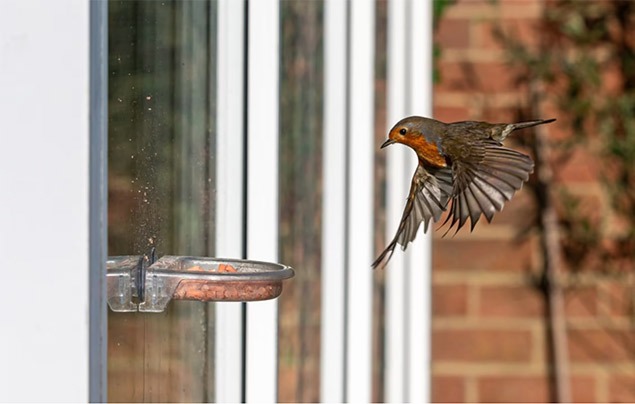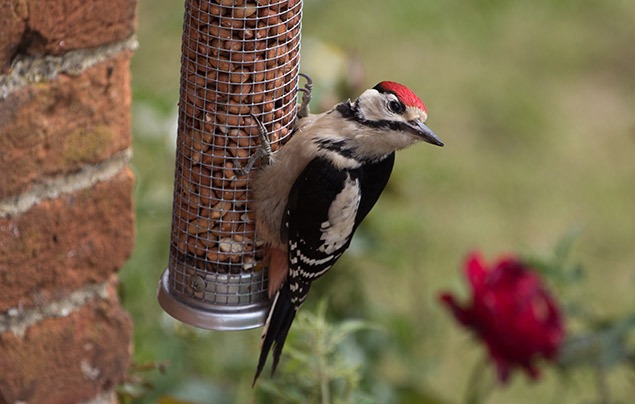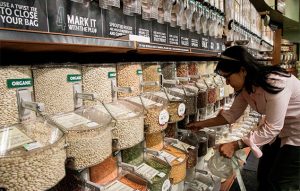The dos and don’ts of feeding the birds
Find out how your family can support local wildlife – while keeping feathered friends safe from harm.
Experts say bird feeding can provide plenty of benefits to wildlife and families. So, here’s how to get it right for you and your feathered friends…
Bird feeding 101
Healthy, nutritious bird food can give your local fliers an extra boost. And scientists say feeding the birds can help your family feel positive, too.
“For the people giving the birds food, it’s generally a very good thing,” says Jack Shutt, a biologist from Manchester Metropolitan University in the UK. “It connects them to nature and gives a lot of people a lot of happiness.”
Though wild birds aren’t quite the same as having a pet, their regular visits and relative tolerance for people make them great candidates for teaching kids a number of life lessons, including empathy and patience.
Plus, when bird feeding is done correctly, giving wild birds healthy foods can boost their populations and increase individual health, Shutt says.
But feeding birds does carry some risk, too.
For starters, outbreaks of disease can be made worse when birds congregate at feeders. A concentrated food source brings the birds closer together than they would be in the wild, which makes it easier for diseases to spread between them.
Studies have shown that some species, such as the blackcap, are changing their long-held migration patterns because bird feeders provide food year-round. Plus, bird feeders can attract other visitors, like squirrels and rats, which can create conflict with people. And birds that make use of seed kicked to the ground are more susceptible to cat attacks.
But with the knowledge that birds are generally in stark decline, experts agree that feeding birds does more good than ill. You could make it a New Year’s resolution (or seasonal resolution, if New Year is a long way away) to give it a go and see what you spot!
Check out these expert tips to help you and your family enjoy the benefits of feeding birds while minimising the potential for harm…
Where to place a bird feeder
- – If you can, pick a location that’s either less than a metre or more than nine metres away from a window. Both help birds avoid accidental crashes.
- – Place the feeder near a bush or tree to give the birds a safe spot to hide in if a predator shows up.
- – No garden? No problem! Many bird feeders can be fastened directly to a window. Try installing one near where your kids eat breakfast, so it feels like you’re all eating together. If you fancy going high-tech, bird feeders equipped with Bluetooth-enabled video cameras are another option.
- – Shutt advises people to resist the urge to set up a bunch of different feeders. One or two are really all you need, and too many could draw in rats, squirrels and other creatures.
- – Place the bird feeders somewhere you can see them. Remember, the whole point is to help your family observe the birds!
- – If you find that birds are accidentally flying into nearby windows, consider moving the feeder to a new location. You could also stick up posters, patterns or decals that help birds notice the glass. Kids will love picking out the designs!
- – Finally, if your garden or street has outdoor cats – whether feral or pets – think carefully about whether you can safely provide a bird feeder. “No matter what you do, bird seed is going to get on the ground,” warns Geoff LeBaron from the National Audubon Society. “And that’s where the birds are most susceptible.”
How to maintain a bird feeder
- – No matter what kind of feeder you use or where you live, experts recommend cleaning your feeders with soap and water as frequently as once a week. “You wouldn’t leave dog food out for weeks,” LeBaron says. “It’s kind of like feeding poisoned food to your pet.” This chore can be a family-friendly activity so long as kids wash their hands when finished.
- – Avoid stocking your feeder with foods that birds wouldn’t encounter naturally in the wild, especially if they’re processed. That means no nut or seed mixes intended for people, as they’ll likely be loaded with salt. No crackers, crisps, raw meat, pet food, honey or bacon fat either.
- – If the birds at your feeder have crusty eyes and appear lethargic, this can be a sign that conjunctivitis is spreading. It’s a natural occurrence, LeBaron says, but you should still take your feeders down for a few weeks to avoid spreading it.
- – Look out for updates from wildlife agencies. Follow their advice if they recommend taking down feeders due to reports of disease.
Bird feeding activities for kids
- – Start by trying to identify which species of birds come to your feeder. If that task sounds daunting, don’t worry! There are lots of guides you can use to help, including free, easy-to-use bird identification apps that might also store lists of species you’ve sighted.
- – When a few birds of the same species come to the feeder at the same time, see if your child can spot differences in the individual birds, like size or colouration.
- – Recognise a bird or pair of birds that return on a regular basis? Give them names! This will help your kids form an attachment with the activity and the birds they’re supporting. (Here are our top tips for snapping great photos of them, too.)
- – Look for differences in the behaviour of the feeding birds. For instance, kids can note when a species appears to be dominant, clearing the area of other birds when it arrives. Or they can watch as birds scatter or become silent when a predator flies overhead. Consider keeping such observations in a field notebook.
- – Different bird species prefer different kinds of food. As an experiment, try putting out different kinds of bird-safe food and have your child log which kinds of birds flock to the feeder that week.
- – Take your research to the next level by participating in a citizen science project. For instance, in the UK the RSPB collects garden bird sightings every January, while the Great Backyard Bird Count is a global birding event that happens every February.
- – You and your family can also contribute to science every day of the year, by logging the species you see in the iNaturalist app. If your kids are younger than 13, make sure this is a family activity – or try the iNaturalist’s kid-safe app, Seek.
Another great way to nurture your little one’s love for nature is with a subscription to National Geographic Kids magazine. Each issue is packed full of articles celebrating our planet, from extraordinary animals to amazing historical events that have shaped our societies. Plus, there are tons of activities, games and tips to get your kids outside and exploring their world! Find out more.














LEAVE A COMMENT
THANK YOU
Your comment will be checked and approved shortly.
WELL DONE,
YOUR COMMENT
HAS BEEN ADDED!
COMMENTS
CUSTOMIZE YOUR AVATAR